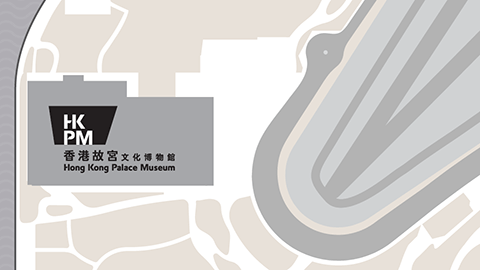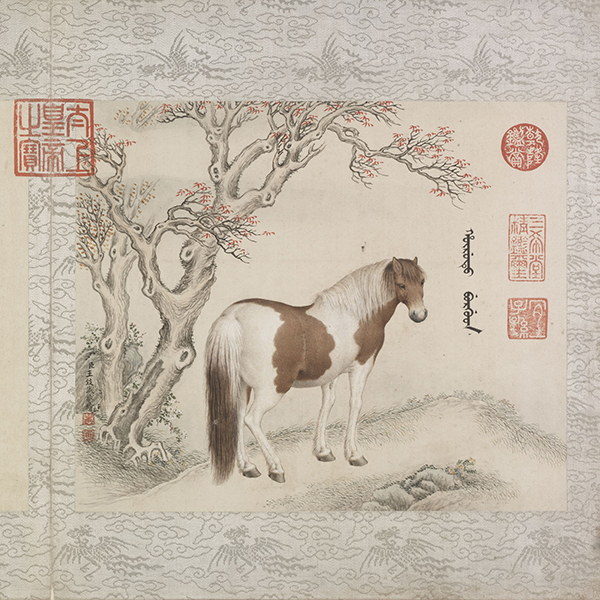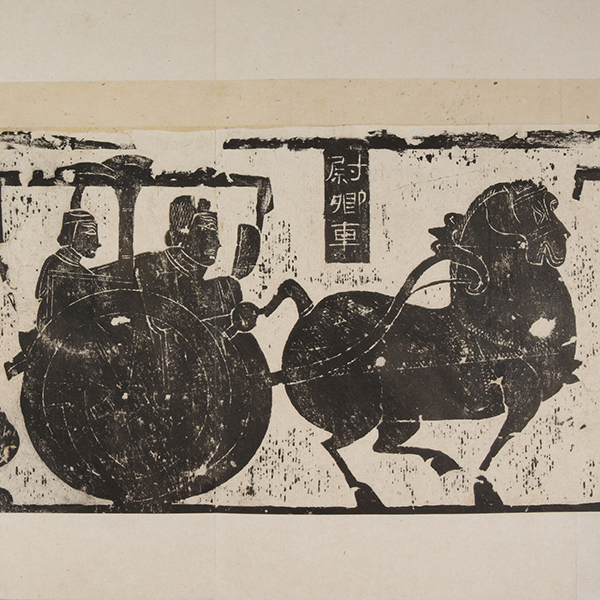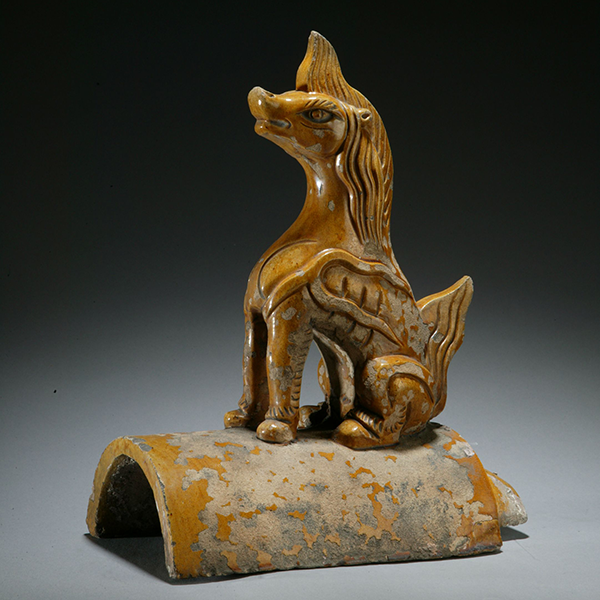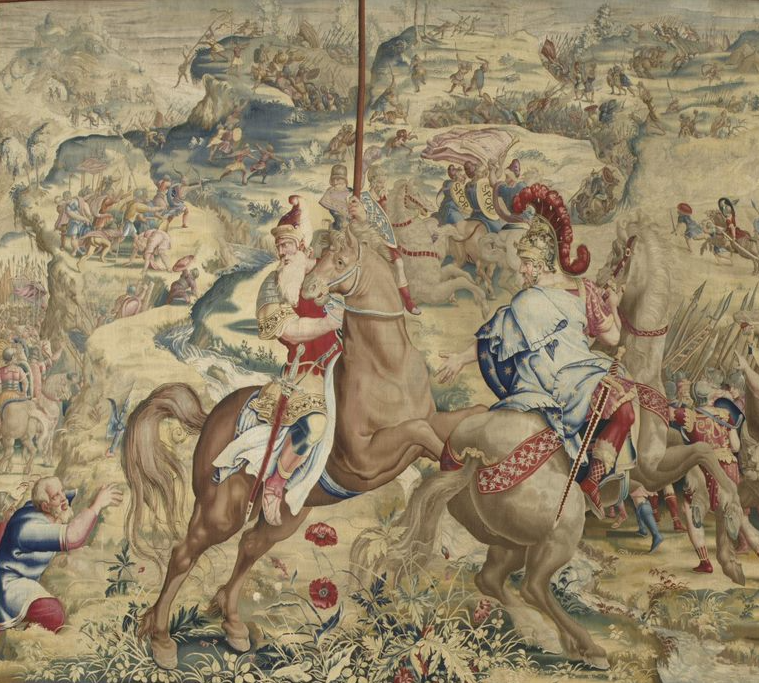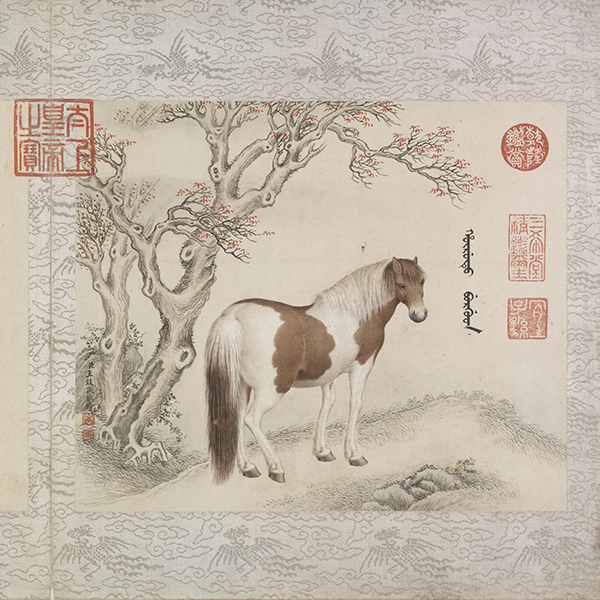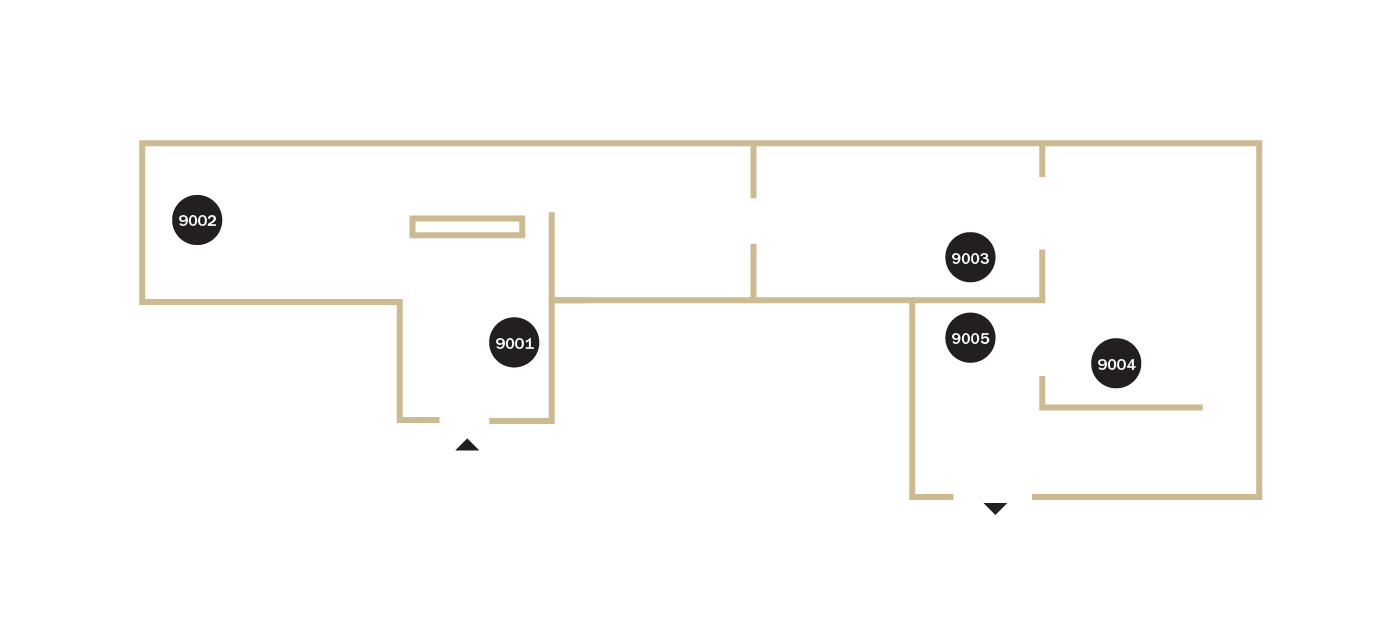Rubbing from the Wu Family Shrines Showing a Scene of Traveling on Carriage and Horse
The Wu Liang Shrine in Jiaxiang county, Shandong province, provides compelling evidence of the status of the horse in ancient China.
Built by the Wu family during the Eastern Han dynasty, the shrine was used for ancestral veneration. This was of great importance to the Han people, who revered the teachings of Confucius and valued filial piety. One of the earliest and best-preserved examples of its type, the walls and roof of the shrine are carved with relief sculptures that are rich with cultural symbolism. The rubbings shown in this exhibition were made during the Qing dynasty, many centuries after the shrine was built.
The Han dynasty was a golden age for funerary art in China, which often features images of daily life, mythology, and the afterlife. Similar themes are expressed in the stone reliefs of the shrine, which depict heaven, the dwelling places of gods and goddesses in Mount Penglai and Kunlun, historical figures, and allusions to ancient texts, such as Legends of Filial Sons, Biographies of Exemplary Women, and Sima Qian’s Records of the Grand Historian.
On the roof of the shrine, which represents the realm of heaven, reliefs show horses alongside various auspicious creatures. The reliefs on the walls of the shrine focus on the earthy realm, with images of people traveling on horse-drawn carriages demonstrating their use in daily life.
© The Palace Museum
